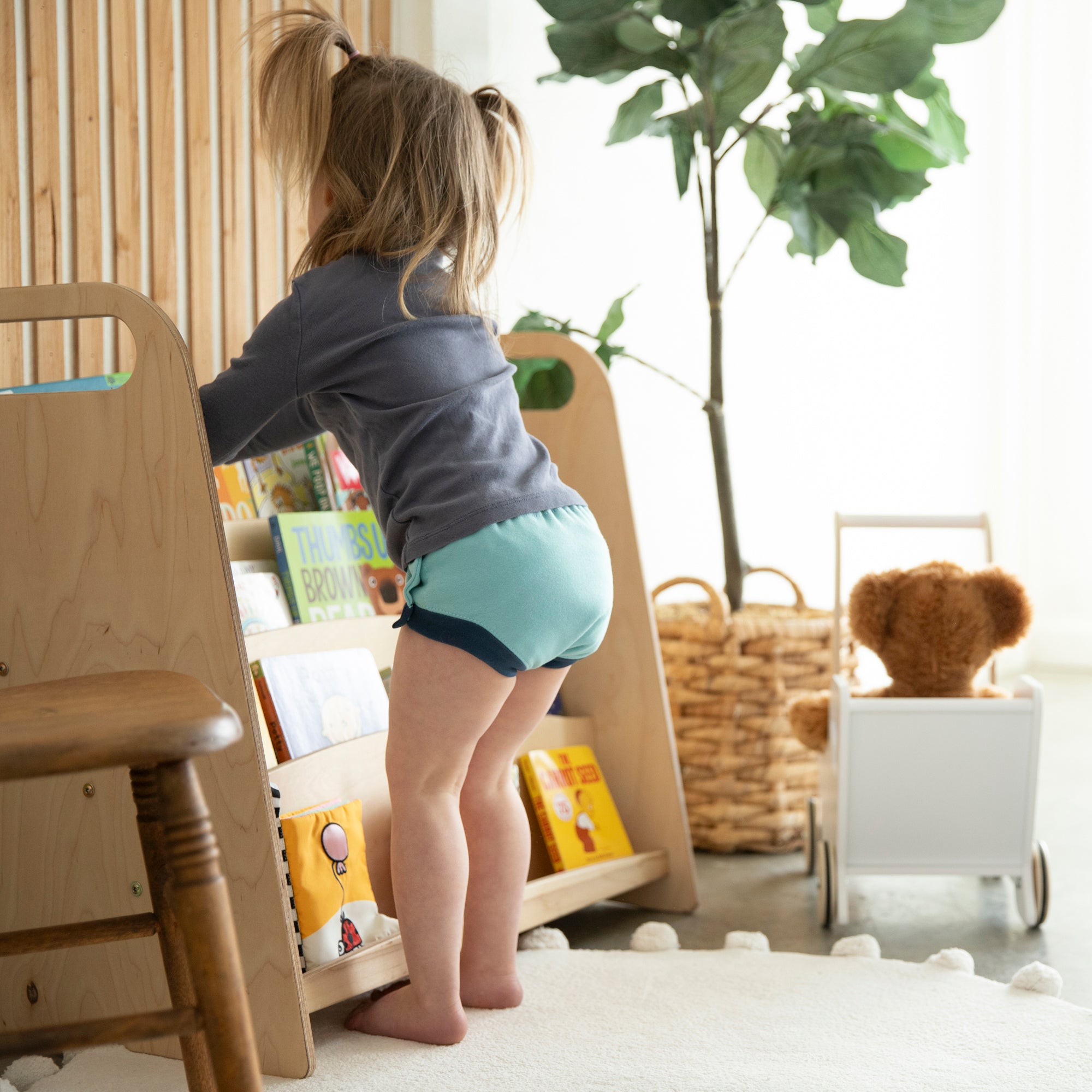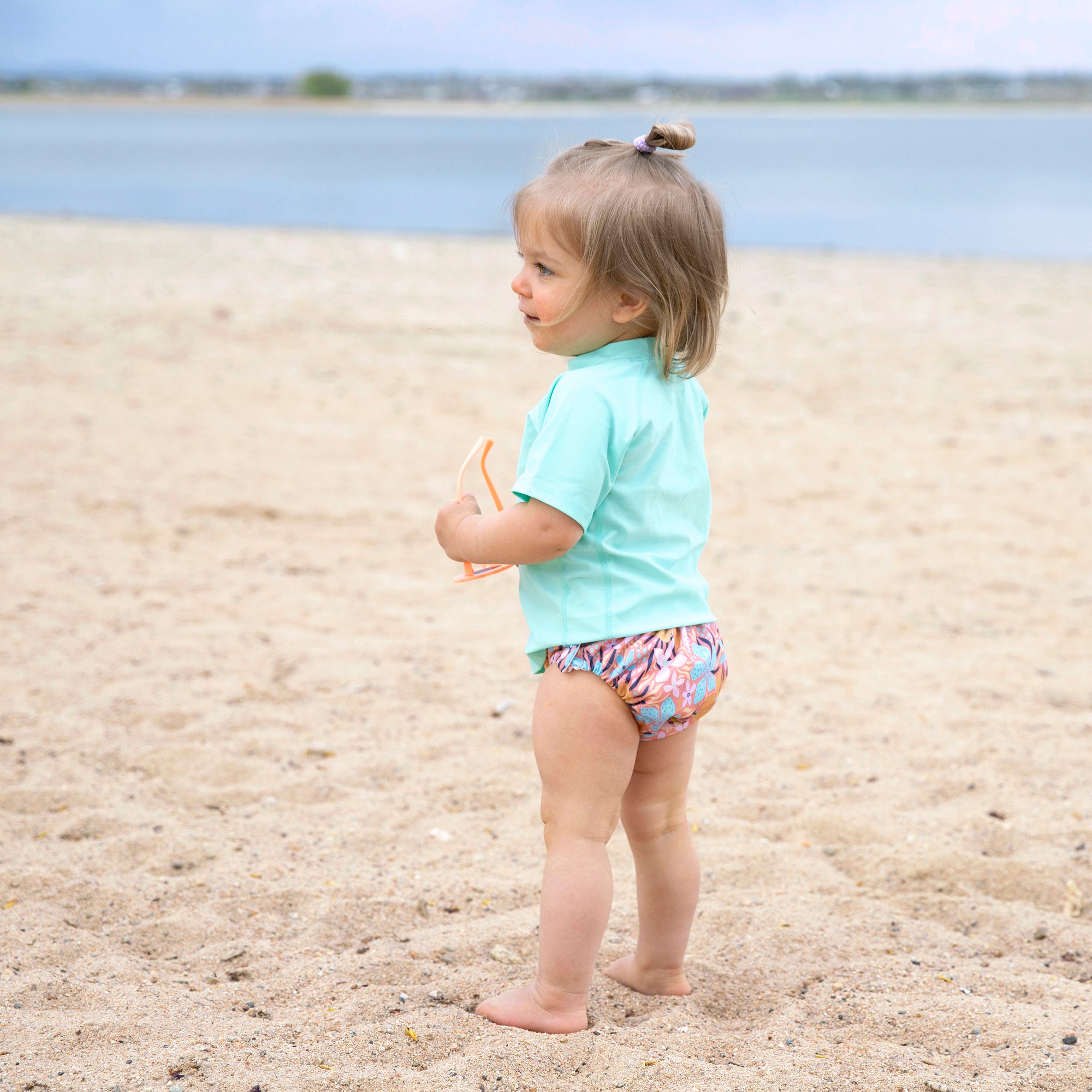I try to be environmentally friendly in the little things I do every day. We use cloth diapers and wipes, we recycle and we use
 re-usable bags at the grocery store. But there is another way I try to reduce the amount of non-recyclable or non-biodegradable waste that our family produces--namely by choosing whether or not to buy certain products based on if they are over-packaged or packaged in materials that cannot be recycled. I already feel good about the fact that we are not putting hundreds of diapers and wipes into the landfill every year--but what about the plastic packaging that disposable diapers and wipes are wrapped in? That can't be recycled ether and it will take between 500 and 1,000 years to break down! In fact, no one really knows how long it will take to break down because plastics have only been in use for the past and none of them have broken down yet. I’m glad we’re not putting that plastic into the land every week either. While I am grocery shopping, I keep in mind that the city I live in recycles plastic containers numbered one, two and five--that covers many containers on the market these days. But before I buy anything sold in a plastic container, I check the bottom for the number--if it isn’t a one, two or five, I usually won’t buy it if there is another option. For instance, as someone with children, I buy a lot of baby food and baby products. The new trend in baby foods are the rectangular plastic containers--popular probably because they won't break and are easily transportable. In my city, these containers cannot be recycled. I'd rather buy the glass jars and recycle them. An even more recent way of selling and serving baby food is in the "squeezy pouches," which are convenient for travel and because baby can eat them without a spoon by sucking the food right out of the pouch. Unfortunately, these plastic pouches go right in the trash so while convenient, I won't buy them either. Make sure you know exactly which numbers your town accepts and you can shop accordingly too. Another grocery necessity that we use a lot of at our house is household cleansers and detergents. Whenever possible, I will choose the green option. You can choose from a wide variety of cleaning products that are made with earth-friendly, non-toxic ingredients and that have not been tested on animals. I have also experimented with making my own cleaning solutions at home-- I mix a little white vinegar, water, and peroxide or rubbing alcohol to clean my counters. And baking soda makes a great soft abrasive for cleaning out sinks, tubs, pots and pans. These are some of the little things that I do on a regular basis to be green at the grocery store and around the house. Stay tuned for Part Two of Going Green at the Grocery Store. Do you have any green secrets that you’d like to share?
re-usable bags at the grocery store. But there is another way I try to reduce the amount of non-recyclable or non-biodegradable waste that our family produces--namely by choosing whether or not to buy certain products based on if they are over-packaged or packaged in materials that cannot be recycled. I already feel good about the fact that we are not putting hundreds of diapers and wipes into the landfill every year--but what about the plastic packaging that disposable diapers and wipes are wrapped in? That can't be recycled ether and it will take between 500 and 1,000 years to break down! In fact, no one really knows how long it will take to break down because plastics have only been in use for the past and none of them have broken down yet. I’m glad we’re not putting that plastic into the land every week either. While I am grocery shopping, I keep in mind that the city I live in recycles plastic containers numbered one, two and five--that covers many containers on the market these days. But before I buy anything sold in a plastic container, I check the bottom for the number--if it isn’t a one, two or five, I usually won’t buy it if there is another option. For instance, as someone with children, I buy a lot of baby food and baby products. The new trend in baby foods are the rectangular plastic containers--popular probably because they won't break and are easily transportable. In my city, these containers cannot be recycled. I'd rather buy the glass jars and recycle them. An even more recent way of selling and serving baby food is in the "squeezy pouches," which are convenient for travel and because baby can eat them without a spoon by sucking the food right out of the pouch. Unfortunately, these plastic pouches go right in the trash so while convenient, I won't buy them either. Make sure you know exactly which numbers your town accepts and you can shop accordingly too. Another grocery necessity that we use a lot of at our house is household cleansers and detergents. Whenever possible, I will choose the green option. You can choose from a wide variety of cleaning products that are made with earth-friendly, non-toxic ingredients and that have not been tested on animals. I have also experimented with making my own cleaning solutions at home-- I mix a little white vinegar, water, and peroxide or rubbing alcohol to clean my counters. And baking soda makes a great soft abrasive for cleaning out sinks, tubs, pots and pans. These are some of the little things that I do on a regular basis to be green at the grocery store and around the house. Stay tuned for Part Two of Going Green at the Grocery Store. Do you have any green secrets that you’d like to share?




